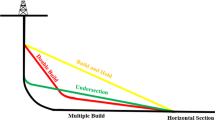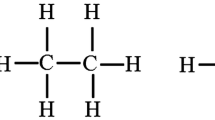Abstract
To the potential oil-spill risk caused by offshore pipeline more attention has been paid after the Dalian oil spill incident from oil-pipeline explosion. Since then an issue about how to prevent and control the sudden oil-spill from the offshore pipeline has been raised. In this paper, we proposed an optimized model to analyze the main causes (probability) of spill and the consequence with the fuzzy comprehensive assessment model. Considering the complicated assessment process for oil-spill, the assessment factor system involving the spill probability and consequence was established based on the operative manual and statistic leakage/damage data of offshore pipeline in order to estimate the integrated spill risk score automatically. The evaluated factors of spill probability could be grouped into five aspects: corrosion, fatigue, national damage, third party, and operational fault; the consequence evaluated factors of spill included hazard of oil and impact-controlling capability. With some modifications based on experts’ opinions, each of the evaluated factors in our work was developed with a relative weight and evaluation criterion. A test example for an offshore pipeline in the Bohai waters was described to show how the model can be used for an actual case in more detail. By using the oil-spill risk assessment model, it is easy to determine the risk level associated with the ongoing activity and management level and hence to take the risk mitigation action immediately.
Similar content being viewed by others
References
API, 2000. Risk-based inspection base resource document. API publica-tion-581.
API, 2002. Computation pipeline monitoring for liquid pipelines. API-1130.
Bai, Y., and Bai, Q., 2005. Subsea Pipelines and Risers, Chapter 40: Integrity Management of Sub-Sea System. Elsevier Science Ltd, 751–787.
Brandt, H., Chomatas, A., and Tangen, K., 2010. Environmental risk assessment of exploration drilling in Nordland VI. DNV-report 2010-04-20.
Brude, O. W., Aspholm, O., and Rudberg, A., 2008. Environmental risk analysis for offshore oil and gas activity. Rio Oil and Gas expo and conference. Rio de Janeiro, Brazil, 2–12.
CONCAWE, 2009. Performance of European cross-country oil pipelines: Statistical summary of reported spillages in 2009 and since 1971. Report No.3/11.
DNV, 2000. Submarine pipeline system, DNV-OS-F101.
DNV, 2004. Recommended practice corroded pipelines, DNV-RP-F101.
DNV, 2011. Assessment of the risk of pollution from marine oil spills in Australian ports and waters. Report No. PP002916.
French McCay, D. P., 2003a. Development and application of damage assessment modeling: Example assessment for the North Cape oil spill. Marine Pollution Bulletin, 47: 341–359.
French McCay, D. P., 2003b. Oil spill impact modeling: Deve-Lopment and validation. Environmental Toxicology and Chemistry, 23: 2441–2456.
French McCay D. P., and Beegle Krause, C. J., 2009. Oil spill risk assessment-relative impact indices by oil type and location. 32nd AMOP technical seminar on environmental contamination and response, 655–681. Emergencies Science Division, Ottawa, Canada, 12–25.
Kruuse-Meyer, R., Bergsli, A., and Rudberg, A., 2011. Operational risk analysis tool OPERAto for oil and gas activities. 2011 International Oil Spill Conference, USA, 259–269.
Lu, Y., Wei, W., and Wang, J., 2012. Fuzzy assessment of oil spill impact and consequence for offshore petroleum industries. 2012 SREE Conference on Hydraulic Engineering the 2nd SREE Workshop on Environmental and Safety Engineering, Hong Kong.
Muhlbauer, W. K., 1996. Pipeline Risk Management Manual. 2nd edition). Gulf Professional Publishing, Burlington, 10–31.
SINTEF, 2009. Blowout and well release characteristics and frequencies. SINTEF Report, No. F1380.
Shao, C., Zhang, Y., and Ju, M., 2009. Applications in oil-spill risk in harbors and coastal areas using fuzzy integrated evaluation model. Communications in Computer and Information Science, 35: 681–688.
Stewart, T. R., and Leschine, T. M., 1986. Judgment and analysis in oil spill risk assessment. Risk Assessment, 6: 305–315.
Woolgar, L., 2008. Assessing the increasing risk of marine oil pollution spills in China. International Oil Spill Conference 2008, Savannah, USA, 0–12.
Author information
Authors and Affiliations
Corresponding author
Rights and permissions
About this article
Cite this article
Lu, Y., Wang, J., Wei, W. et al. Development and application of oil-spill risk assessment model for offshore pipeline. J. Ocean Univ. China 13, 415–420 (2014). https://doi.org/10.1007/s11802-014-2284-3
Received:
Revised:
Accepted:
Published:
Issue Date:
DOI: https://doi.org/10.1007/s11802-014-2284-3




